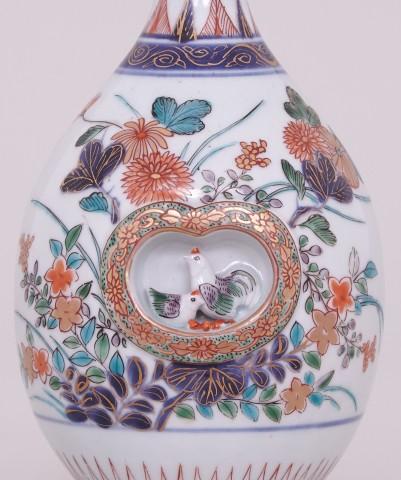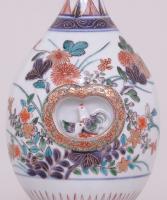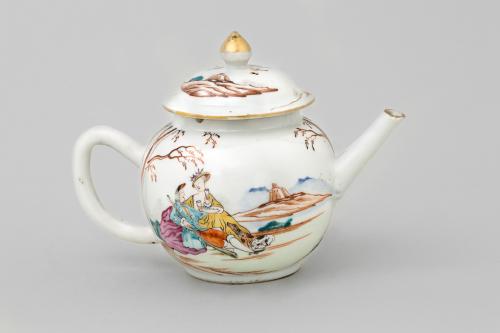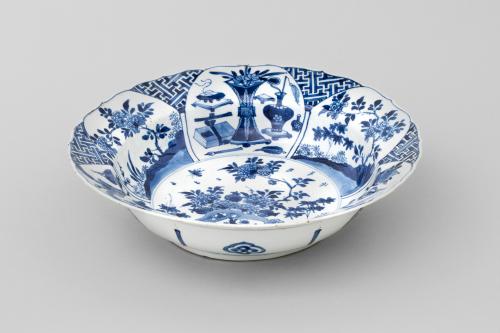



Price on application
This object is eligible for a Certificate of BADA Provenance
The BADA Standard
- Since 1918, BADA has been the leading association for the antiques and fine art trade
- Members are elected for their knowledge, integrity and quality of stock
- Our clients are protected by BADA’s code of conduct
- Our dealers’ membership is reviewed and renewed annually
- Bada.org is a non-profit site: clients deal directly with members and they pay no hidden fees
The bodies of pear shape rising to tall slender necks, both moulded to each side with a kidney-shaped recessed panel modelled in high relief with a hen and a cockerel and the reverse with a rose in bloom, each panel bordered by a frame painted with scrolling gilded flowers on green seeded grounds, surrounding the panels the bodies are painted with branches of chrysanthemum, further flowers and tall grasses all painted in the imari palette in underglaze blue, iron-red, green, yellow, aubergine and black enamels highlighted in gold, a collar of gilded scroll work on underglaze blue around the waists, below stylised pointed petals extending up the necks, a band of zigzag pattern around the feet, the base glazed.
LITERATURE
There is a pair of almost identical bottle vases in the collection of the British Museum, London, which were donated by Sir Augustus Wollaston Franks (museum number Franks.492).
Similar bottle vases are in the collection of Kurita Museum, Imaemon Museum of Ceramic Antiques, Arita, Keramiek Museum Princessehof (LY 0593.B), and also in the Museum Boymans-van Beuningen, Rotterdam. The latter is illustrated in C.J.A. Jörg, Fine and Curious, Japanese Export Porcelain in Dutch Collections, (Amsterdam, 2003), p. 98, no. 96. The author explains that porcelain with recessed panels such as in the bottles above, were only produced in Japan and during a very short period as it was time consuming and expensive.
For an example in Kurita Museum, see Kurita Hideo, History Of the Kurita Collection And Museum (Ashikaga, 1990).
For another example in the Imaemon Museum of Ceramic Antiques, Arita, see the Kyushu Ceramic Museum, Arita no meiho [Famous Treasures of Arita] (Saga, 2001), exhibition catalogue, the Saga Prefectural Kyushu Ceramic Museum, p. 48, pl. 66.
Dimensions
Height: 23 cm; 9 inStock number
BD32 & BD33The BADA Standard
- Since 1918, BADA has been the leading association for the antiques and fine art trade
- Members are elected for their knowledge, integrity and quality of stock
- Our clients are protected by BADA’s code of conduct
- Our dealers’ membership is reviewed and renewed annually
- Bada.org is a non-profit site: clients deal directly with members and they pay no hidden fees







